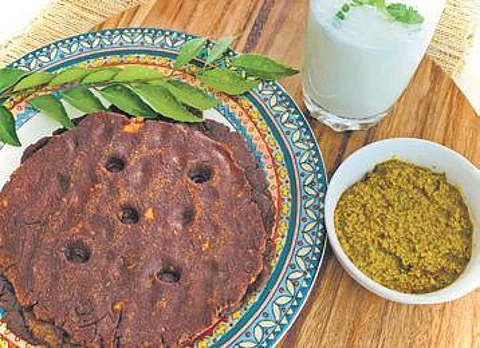

CHENNAI: Ragi, commonly known as finger millet, derives its name from the appearance of the head of the grain comprising five spikes, and thus resembling our five fingers. Scientifically called Eleusine coracana, it is an annually cultivated cereal crop, vastly found in the tropical regions of Africa and Asia, such as in Ethiopia, India and Sri Lanka.
The drought-resistant nature of the crop makes it conducive to grow in various geographical terrains across India. Widely distributed across several states in India, its local names include ragi in Kannada, Hindi and Telugu, nachni in Marathi, madua in Bengali and kezhvaragu in Tamil. “Ragi is the king of millets. There’s a reason why it’s consumed by farmers as porridge before they get on with labour-intensive work on the fields. It’s also given to babies in South Indian households.

It’s so versatile in nature that you can prepare idli or dosa batter with it, use the flour to make rotis, koozh and kali for summer. It will cool the body. I was introduced to millets by my Ayurveda doctors for a health condition. With time, I’ve witnessed drastic changes in my body and fitness level. I’m a full-fledged milletarian now and I encourage people to incorporate millets in their everyday diet,” says Indra Narayan, home chef. The annual grass grows up to a height of 1 to 2 metres.
Narrow and green, the leaves measure between 30 and 70 cm. The straight, or sometimes curved, branches hold seeds arranged in florets, which can be brown, red or purple in colour. Upon developing, the seeds of the ragi plant are dried, cleaned and stored as grains. Over the years, the humble millet may have taken a backseat due to the increasing popularity of other cereals. But, it’s making a comeback with increasing awareness and dietary modifications, she says. The author of Millet Kitchen: The Simple Art of Millet Cooking throws light on this millet’s impressive nutritional profile.
Holistic breakfast food
Ragi comprises a vast array of key nutrients like vitamins C and E, B-complex vitamins, iron, calcium, antioxidants, proteins, fibers, sufficient calories and useful unsaturated fats. Having it for breakfast ensures faster assimilation of nutrients which is absorbed and transferred to the vital funct i oning of body organs.
Gluten-free diet
It is low on calories. Good for diabetic patients and keeps blood sugar levels in check. Reduces cholesterol and lowers blood pressure.
High on fibre
It’s good for digestion, keeps you satiated for a longer time and relieves you of constipation. It also helps get rid of irritable bowel syndrome and stomach-related problems.
Fortifies bone density
A fantastic source of natural calcium, it strengthens bones in growing children. It also restores optimum bone density in older people.
Treats anaemia
Ragi is a powerhouse of iron, serving as a boon for people who experience low haemoglobin levels in the blood, thus effectively treating anaemia. It also enhances the immunity and boosts the secretion of red blood cells (RBC).
Improves heart health
Ragi is completely devoid of cholesterol and sodium, so it can be consumed by those with heart ailments.
Pregnancy and lactation
Sprouting some ragi grains overnight and consuming them the next morning has massive benefits for the health of pregnant and lactating women. Due to the immense iron and calcium content in ragi, it is ideal to stimulate milk production and balance hormonal activities in expecting women and young mothers.
Child’s nutritional needs
The comprehensive nutritional content in ragi makes it a perfect food for meeting a growing child’s ever-expanding nutrient requirements.
Skin and haircare
Consuming ragi repairs the damaged skin cells and keeps your skin healthy. Rich in amino acids, it promotes hair growth.
NUTRITIONAL VALUE FOR RAGI (PER 100 G)
Energy: 328 kcal
Carbohydrate: 72 g
Protein: 7.3 g
Fat: 1.3 g, Calcium: 344 mg
Phosphorus: 283 mg,
Fibre: 3.6 g
Source: Lakshmi, chief dietician, Gleneagles Global Health City
Ragi sweet potato roti
INGREDIENTS
Ragi flour: 2 cups
Sweet potato: 1 big (boil, peel and mash)
Turmeric powder: a pinch
Black pepper powder: according to your spice level
Yogurt: 1/4 cup
Cumin seeds: 1/4 tsp (dry-roast and powder)
Salt to taste
METHOD
Take ragi flour and mix it with mashed sweet potato, turmeric powder, pepper powder, yogurt, cumin seeds powdered and salt.
Make it as pliable dough.
Take a fistful dough and spread it in parchment paper/ banana leaf by wetting your hand.
Transfer into heated skillet.
Cook both the sides by smearing generously ghee/oil.
Serve with your favourite chutney or even buttermilk.